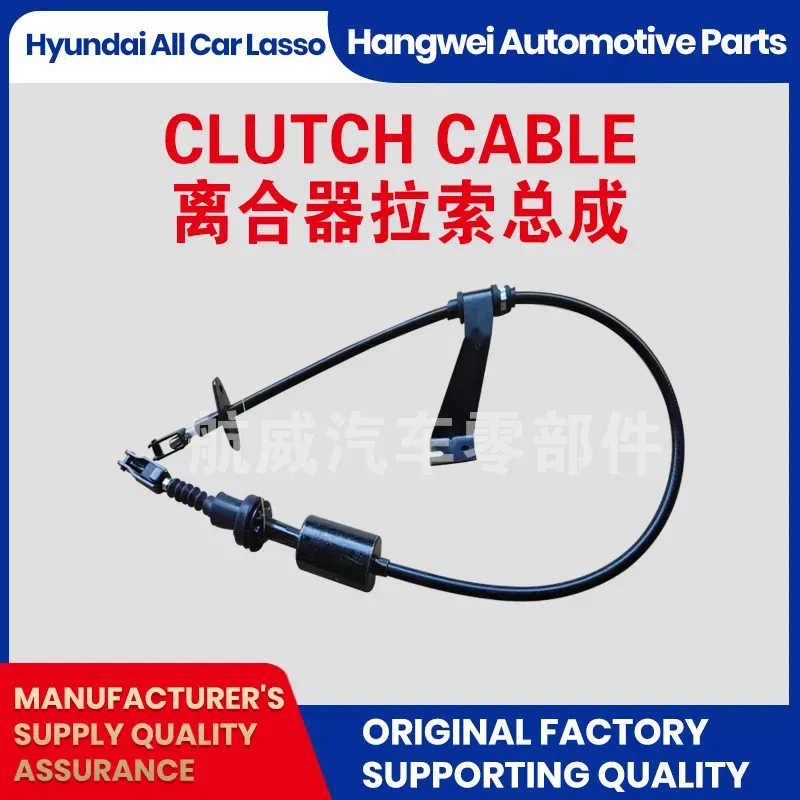Workings of Clutch Pipe and Hose Systems
The proper functioning of a vehicle's clutch system relies heavily on its components, especially the clutch pipe and stainless clutch line. These parts work in tandem to ensure smooth power transfer and precise clutch operation. Whether you're a car enthusiast or a casual driver, understanding these components can help you maintain your vehicle's performance and address issues proactively.

Key Steps Clutch Pipe and Clutch Reservoir Hose
The clutch pipe is a critical conduit that carries hydraulic fluid between the clutch master cylinder and the slave cylinder. Made from durable materials like steel or reinforced plastic, it withstands high pressure and mechanical stress, ensuring consistent fluid flow. Any damage to the clutch pipe can lead to fluid leaks, reduced clutch responsiveness, or even complete failure.
Adjacent to the clutch pipe is the clutch reservoir hose, which connects the clutch fluid reservoir to the master cylinder. This hose maintains a steady supply of hydraulic fluid, allowing the clutch system to operate with minimal friction. It is designed to be flexible yet sturdy, resisting cracks and leaks caused by engine vibrations or temperature fluctuations. Proper maintenance of the clutch reservoir hose is essential for preventing air bubbles from entering the system, which can compromise clutch performance.
The Function of Hose Clutch in Hydraulic Systems
The hose clutch, often referred to as a clutch hose, serves as a flexible link between rigid components in the hydraulic clutch system. Unlike the clutch pipe, which is more rigid, the hose clutch allows for movement, such as the vibration of the engine or the shifting of suspension components. This flexibility prevents stress on fixed parts, extending their lifespan and improving overall system durability.
A high-quality hose clutch is constructed with layers of reinforced rubber or synthetic materials, providing resistance to oil, heat, and abrasion. Over time, however, exposure to these elements can cause the hose clutch to degrade, leading to leaks or reduced fluid pressure. Regular inspections for signs of wear, such as bulges, cracks, or hardening, can help identify when a replacement is necessary to avoid unexpected clutch issues.
Advantages of Stainless Clutch Line for Performance Vehicles
For performance-oriented vehicles, the stainless clutch line offers significant benefits over traditional rubber hoses. Made from braided stainless steel with a Teflon inner liner, this type of line is highly resistant to expansion under high pressure, ensuring precise and immediate clutch response. The stainless clutch line minimizes fluid compression, which is crucial during aggressive driving or racing, where split-second clutch control can impact performance.
Additionally, the stainless clutch line is more durable than standard hoses, resisting corrosion, heat, and physical damage. Unlike rubber components that may degrade over time, the stainless steel construction maintains its integrity, reducing the need for frequent replacements. This makes the stainless clutch line a popular choice for enthusiasts who prioritize reliability and optimal clutch performance.
Protecting Your Clutch Pipe and Hose System
Regular maintenance is key to ensuring the longevity and efficiency of your clutch system components. Start by inspecting the clutch pipe and clutch reservoir hose for signs of leaks, such as wet spots or fluid residue. Check the hose clutch for cracks, soft spots, or excessive stiffness, as these indicate wear and tear. It's also important to flush and replace the hydraulic fluid according to the manufacturer's recommendations, as contaminated fluid can damage the stainless clutch line and other components.
Clutch Reservoir Hose FAQs
How often should I inspect my clutch reservoir hose?
Regular inspections during routine maintenance.Look for signs of cracking, swelling, or leaks, as a damaged clutch reservoir hose can disrupt fluid flow and affect clutch performance.
Can a damaged clutch pipe cause clutch slipping?
Yes, a leaking or blocked clutch pipe reduces hydraulic pressure, making it difficult for the clutch to engage fully. This can result in clutch slipping, where the engine revs without transferring power effectively to the transmission.
What are the benefits of upgrading to a stainless clutch line?
A stainless clutch line offers improved pressure resistance, reduced fluid expansion, and enhanced durability compared to rubber hoses. This leads to more precise clutch engagement, especially in high-performance driving scenarios.
How do I identify a hose clutch leak?
Look for fluid stains around the hose clutch connections or along the hose itself. You may also notice a soft clutch pedal or difficulty shifting gears, as a leak reduces hydraulic fluid levels and pressure.
Are all clutch pipes and hoses compatible with stainless clutch lines?
Compatibility depends on your vehicle's specific clutch system design. It's important to check manufacturer specifications to ensure that a stainless clutch line can be integrated without modifying other components like the clutch reservoir hose or hose clutch.
The clutch pipe and clutch reservoir hose are vital components of a vehicle's hydraulic clutch system, each playing a unique role in ensuring smooth operation and reliable performance. By understanding their functions and prioritizing regular maintenance, you can prevent issues like leaks, reduced responsiveness, and premature wear. Whether you're maintaining a daily driver or upgrading a performance vehicle, proper care of these components ensures your clutch system operates at its best, providing the control and reliability you need on the road.
-
Workings of Clutch Pipe and Hose SystemsNovasJun.04,2025
-
The Inner Workings of Hand Brake Cable SystemsNovasJun.04,2025
-
The Secrets of Throttle and Accelerator CablesNovasJun.04,2025
-
The Hidden Lifeline of Your Transmission Gear Shift CablesNovasJun.04,2025
-
Demystifying Gear Cables and Shift LinkagesNovasJun.04,2025
-
Decoding Clutch Line Systems A Comprehensive GuideNovasJun.04,2025
